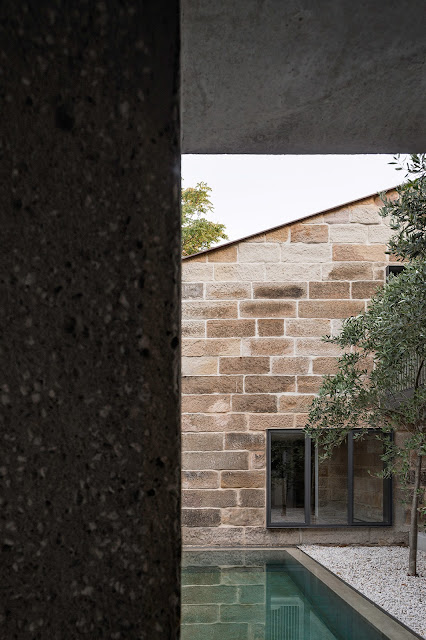Renato D’Ettorre Architects designed minimalist Italianate House in Surry Hills,
Sydney, Australia. The architects translated an existing 1990s office fit-out into a contemporary residence while honoring the historic charm of the building and giving the owners a comfortable home with bold design modifications.
Photography © Simone Bossi
Description from RenatoD’Ettorre Architects:
This
is a large addition and alterations project and there are four main components
to the project – the Italianate Terrace House for the family, the Historic
Sandstone stables as guest quarters (and later for ageing parents), the new
concrete carport with landscaped roof terrace along with the gardens and the
swimming pool located in a conservation area of Surry Hills, Sydney, Australia.
The
design generates a sense of wonder and awe both inside and out encouraging the
young growing family to explore and enjoy the various spaces with multiple
sensory experiences and emotions. They are spaces of silence and contemplation,
through calming and restrained aesthetics that will serve the young family well
into the 21st Century.
The
challenge was to convert the 1860’s building and the 1990’s office fit-out of
grandiose style, into a contemporary family home for my clients.
The
underlying key design objective of the project was to understand the sense and
feeling of the place, its history and the cultural value of the original
architecture.
We
carefully considered and reinterpreted in a contemporary language, the
essential and historical character of the site in order to celebrate, to uphold
and revive its history. We wanted to
avoid tendencies for preconceived ideas and solutions which in turn is
formulaic in design approach and keep the new design elements simple, so that
they avoided complications, resulting in generating pure interiors.
It’s
a dialogue between the structure and the rich context of the site,
characterised as rustic charm, with the new work, having a relationship between
the warmth of the old materials and the simplicity of the modern.
And
finally, the outcome of the conversion presents the benefits of the measures
undertaken in preserving and reinterpreting history whilst accommodating modern
life without sacrificing either objective.
UPDATE: The Sandstone Stables








































